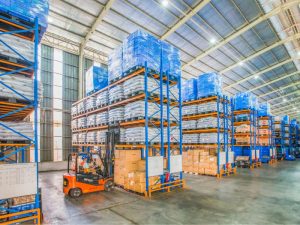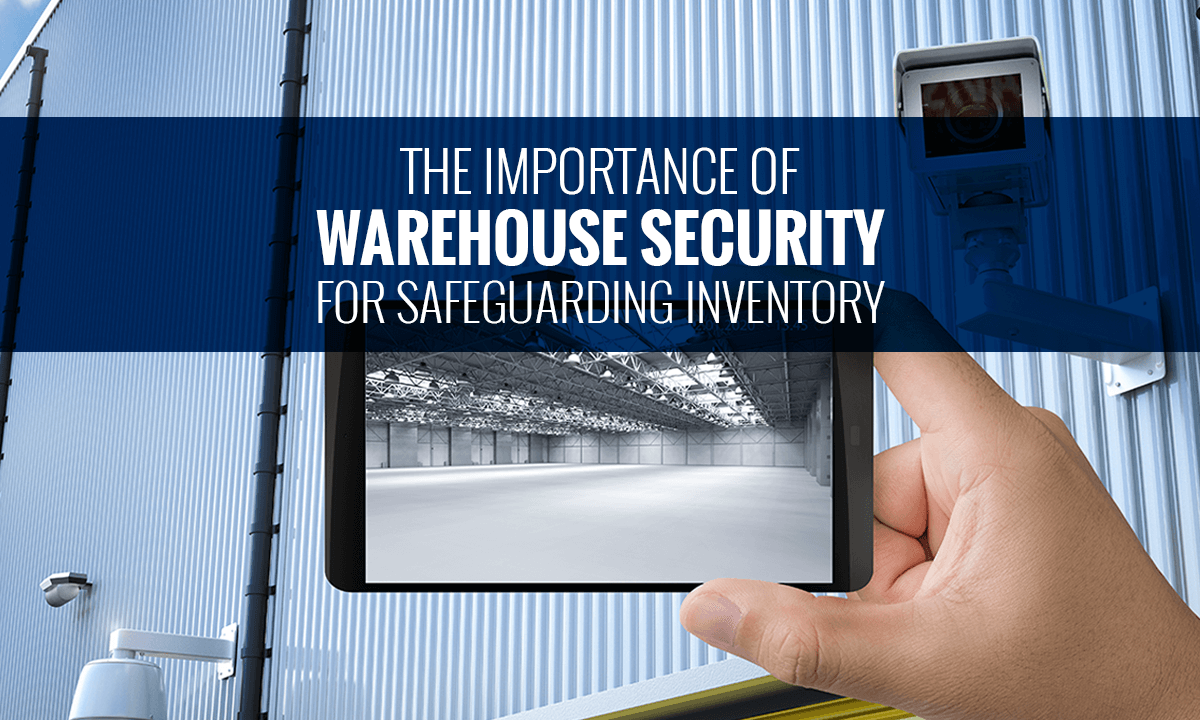8 Types of Warehouse Security Measures + Tips for Improving Safety
Inventory shrinkage, cargo theft, lost inventory—whatever you call it, the loss or theft of valuable inventory in your warehouse can be a big problem. In fact, data cited by Pride Transport states that “Cargo theft is a $15 to $30 billion dollar a year problem” and that “those numbers could be low due to the fact that cargo theft is still vastly under-reported.”
What does warehouse security have to do with preventing cargo theft/shrinkage? How can you create a high-security warehouse? What warehouse security measures does your business need?
The Importance of Warehouse Security
Cargo or inventory still in the warehouse isn’t exempt from being stolen. For example, a number of closed warehouses suffer major theft incidents—such as the theft of “$5.7 million in cell phones from a warehouse in Delaware” or “$1.5 million in equipment from a California warehouse.”
A lack of warehouse security gives thieves an easy way to steal product and make a quick buck—and no ecommerce business is immune to theft. If your customers are willing to buy the product, then it has a value thieves can capitalize on. You might be wondering: “What if I’m not managing a warehouse myself? Do I still need to worry about security then?” The answer is: yes. If you’re partnering with a third party logistics (3PL)company, their warehouse/distribution center security is still very much a concern since it affects your products.

Warehouse Security Strategies that Work
Protecting the Facility Inside and Out
When it comes to warehouse security, it’s important to protect the facility both inside and out. External-facing warehouse security systems, called perimeter security, are used to defend entry points, parking lots, and the property line. These external security measures are useful for preventing theft by keeping thieves out of the warehouse or by intimidating casual thieves into thinking the theft attempt isn’t worth the effort and risk.
Internal warehouse security measures help to catch thieves who breach external warehouse security or employees who abuse their access to steal product from the warehouse. Instead of prevention and intimidation, internal security measures often focus on limiting access or capturing evidence to help catch thieves after the fact.
It’s important to have layered security measures to protect the facility inside and out. After all, in a warehouse: “people are bringing things in and out on a regular basis, and some of those people may not be your employees. There are probably multiple entrances and exits and they might not all be manned 24/7.”
Because of how many entry ways and exits there are in a warehouse, combined with the presence of non-warehouse personnel, it’s all too easy for a thief to infiltrate the warehouse and walk off with valuable goods amid the hustle and bustle. This is why both internal and external warehouse security solutions are necessary.
8 Types of Warehouse Security Measures
What are some of the specific types of warehouse security measures that are needed to create a high-security warehouse? Some examples of useful warehouse security tools include:
- Warehouse Security Cameras. Security camera warehouse setups can be both a great deterrent to thieves and a simple way to gather strong evidence to pursue a case against them if they do steal something. Modern security camera systems can collect high-definition footage and upload it to an offsite server to make identification of thieves easier and preserve the evidence if they try to tamper with the cameras or onsite recording stations.
- Warehouse Lighting. Yes, lighting can be considered a vital part of warehouse security. Poorly-lit warehouses not only provide protection for thieves (making them harder to identify), they can be a safety hazard for warehouse employees and security staff. So, keeping warehouse facilities well-lit is a crucial safety measure—both to prevent theft and on-site accidents.
- Alarm Systems. Alarm systems can be a crucial tool for deterring theft attempts, minimizing the amount of goods stolen by thieves, and summoning security or police in time to stop thieves from getting away. Knowing that there’s an alarm keeps thieves on a tight time limit so they don’t steal as much (or deterring them from the attempt). Getting an alert from a silent alarm helps security and police arrive on the scene quickly so thieves can be detained before they make off with valuable products.
- Security Patrols. Does the warehouse have on-site security staff to help deter thieves? Do they make the rounds to verify that there are no intruders lurking in security camera blind spots? Having manual security patrols to police the premises can be a massive deterrent to casual thieves and trespassers that minimizes large-scale theft risks.
- Access Control Systems and Security Cages. How is high-value merchandise kept secure within the warehouse? How is access to these items controlled? Security cages and access control systems make it harder for thieves to get at valuable inventory—creating a high-security warehouse environment that minimizes theft risks.
- Inventory Tracking. How is inventory in the warehouse tracked? How frequently is inventory checked for missing products? Inventory tracking solutions are vital for ensuring that inventory shrinkage can be identified quickly (and that inventory availability reports in your ecommerce store are accurate). Keeping track of inventory is a loss prevention 101 basic.
- Entryway Security Doors. How tough are the doors allowing entry into the warehouse to bypass? Weak locks or doors can allow thieves into the warehouse quickly, giving them easy access to the interior. Robust doorways delay thieves, increasing the likelihood of them getting caught by police/security (and of them giving up before making entry).
- Window Security. Are there ground-level windows that thieves can easily break to get into the warehouse? Or, are they high up and reinforced to prevent break-in and entry? Strong security means making windows as difficult to break into as possible, such as using reinforced glass, window locking mechanisms, or even steel bars/window covers to deter entry attempts.
These eight items aren’t the only warehouse security tools that you might use to protect your warehouse. While no security will ever be 100% proof against thieves, using all of these measures helps to create a high-security warehouse that minimizes risks and better protects your products. At the North Carolina Protection Group, our goal is to effectively deter theft, vandalism, graffiti, loitering, trespassing, and other criminal activities. Call and Speak with a Specialist today 919-886-NCPG (6274)




